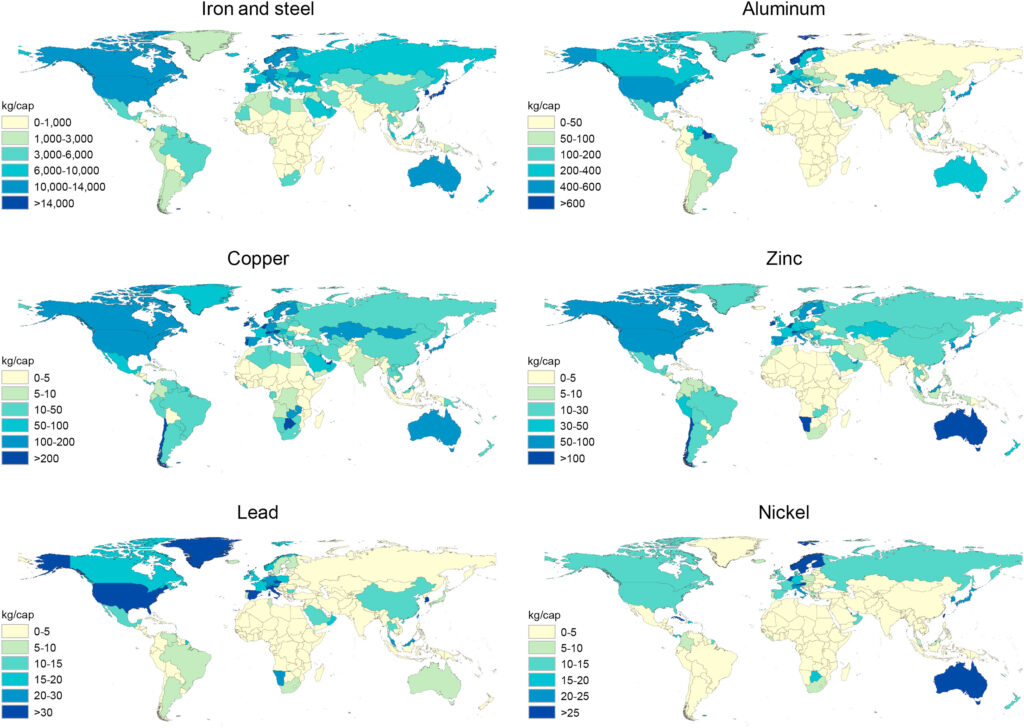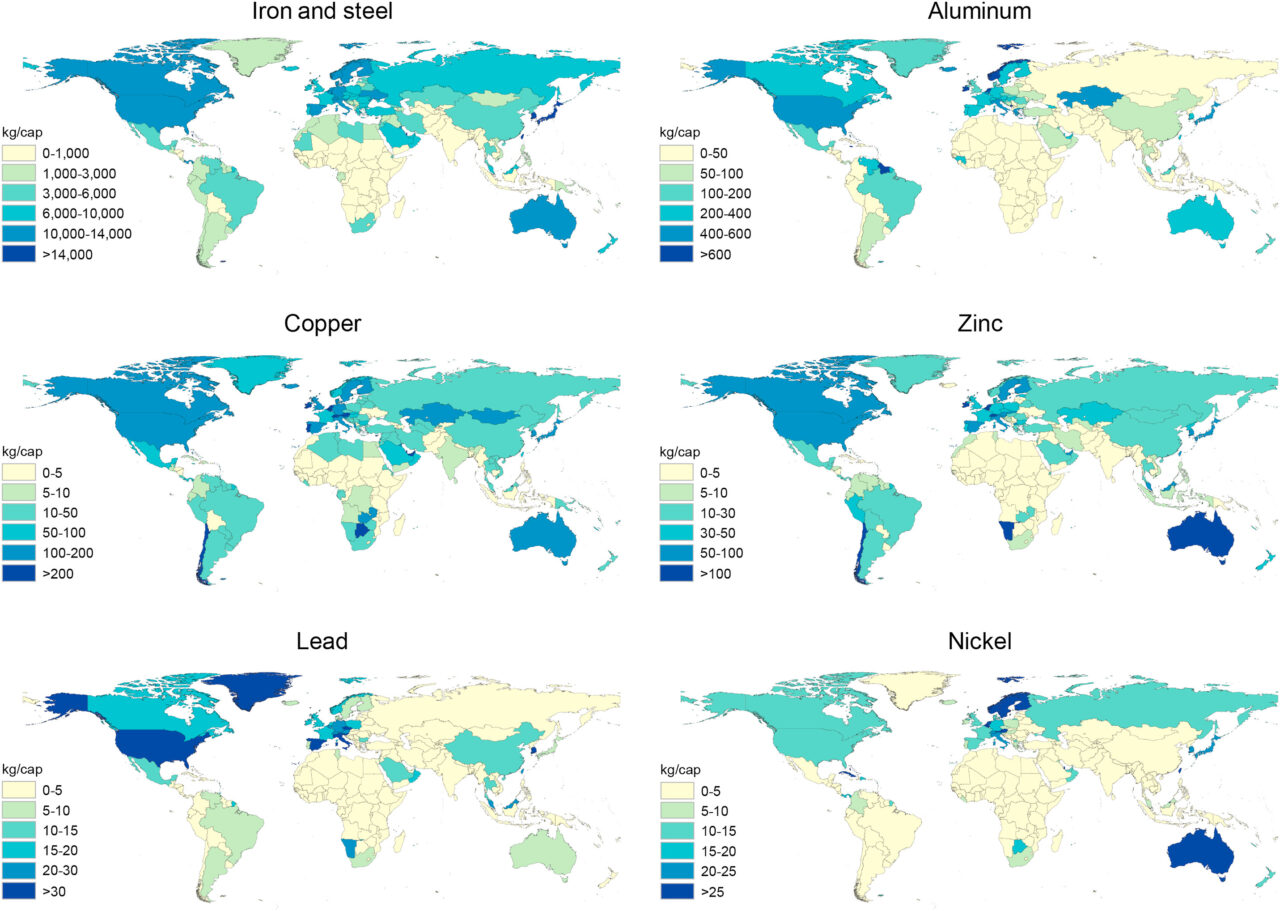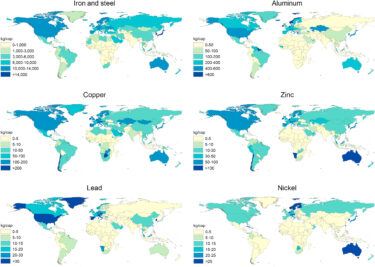
著者
Takuma Watari and Ryosuke Yokoi
掲載誌
Resources Policy, 2021, 70, 101968, Link
要旨
In-use stocks of metals underpin essential services in the world’s economy and drive long-term anthropogenic metal cycles. Given this fact, the global distribution patterns of metal stocks provide a fundamental basis for examining ways to satisfy the basic needs of an expanding global population within the Earth’s carrying capacity. Here we show that the in-use stocks of six major metals (steel, aluminum, copper, zinc, lead and nickel) are distributed very unevenly across 231 countries and regions. According to our analysis, the highest 20% of the world’s population (ordered in terms of metal stock per capita) accounts for approximately 60-75% of the world’s total metal stock, while the lowest 20% accounts for only about 1%. International inequality in metal stocks has been decreasing over time due to the strong growth in developing countries, mainly those in Asia. However, our analysis shows that the continued reduction of metal stock inequality through this growth-led pathway will put heavy pressure on the environment, with a 2-3-fold increase in global metal demand by mid-21st century. These findings imply the need for alternative stock evolution patterns involving contraction and convergence, where global per capita metal stock growth stabilizes at a level below that current for developed countries.


